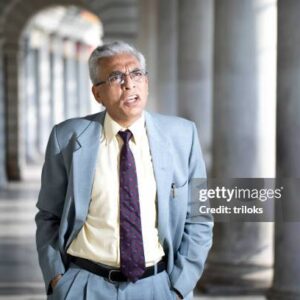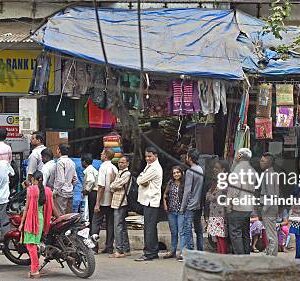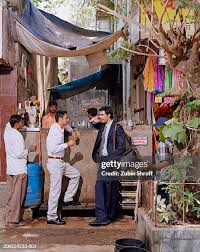An intricate phenomenon – The ‘ethos” simply means, ‘ the distinctive spirit of a culture or an era’. It may further be defined as ” the general mood of a society at the large level for a given long period of time so it may count to an era.” When I m talking of “Mid twentieth century” then I am to cover the period from the year of 1930 to 1980. Although this period was full of turmoil with political events in the Indian history. But the content of my writing concern with social study and “Ethos” as such come in the ambit of that. Like all other society Indian social system is also divided in upper, middle and lower classes. Again there are classes inside the class meant strata is there and it remains in every social system.
But despite of this , there may prevail an intrinsic human phenomenon that is called “ethos” and this element need not to prevail in all weathers . A social system may lack this factor of “ethos” for a long period. As on today’s society has been prone to “short term” bout of mood and this can not be categorized as an “ethos.”For example the use of applications needed for “social media.” Although social media is an important tool to establish some “trend”, but it is a “medium” only. Meanwhile when this “trend” for being “stable” in the mindset of a social system for a given long span of time, and generates its an impressive impact. Then it metamorphoses into an “ethos” of that period of time.
In the mean while if some political surge happens to put its effect on some nation for a given long span of time that nevertheless can not be classified as the”ethos” of the nation. “Ethos” carries a fundamental value, that needs to be acceptable by the public at large. Along with it, this fact too can not be ignored that as politicking has got its impact upon the society, like wise “sociology” too carries on an impact on the politicking. In this way political science and sociology seem to intermingle with one another. The most suitable example of this is co ordination of element of religion in the Indian politic. Since “religion” plays a significant role in the society, so being stable in the genre it’s effecting the mood, and, to say has been rooted in as “fundamental element.”
Now comes up the genre of “ethos” of ” mid century of Indian society,” a period of time about of fifty years. If we try to study the social infrastructure of that era, we find, in the name of upper class limited numbers of highly affluent cluster existed. In the name of middle class even the people of near about upper class were listed into middle class. The so called middle class and lower class were intermingled as such so that one could not put them apart from each other. keeping apart the down trodden class that was doomed not to be counted into any class(it’s the truth).
India with the 85% of its total population was in fact an agricultural State and whatever cities existed in that period were not so big. In fact they were medium class or small sized cities . The reason behind was, dwellers inhabited the cities were the denizens recently migrated from rural areas to the cities. These dwellers used to keep alive their contact with their villages, by visiting home places frequently. Another important factor that has been ignored was, at that period of time the lower class of villages was in the category of laborer. But despite of that, owing to cordial infrastructure of villages the distance in social system as such between middle class and lower class was minimal. A coordination always existed there.
Transition period of society – This was the period of Indian social system that could be categorized as “Transformation from rural to urbanization.” To make understand the “ethos ” of that mid century all this description is made to realize that entire society was interwoven as such. That happen to be effected by some incident or event. At that time, in the name of entertainment the religious activities at the local level were in fashion. For example, the organizing of some prayer, visiting the local temple on some important festival. At the utmost, annual organization of “Ram leela”( a long theatrical drama played by local artists for long session at night in a way, it went on for days).
All these plays and theatrical events had had one common element of tragedy , sacrifice and in total, narration of more of pain and sorrow than gaining of pleasure. In time to come ahead, all these periodical stories became the part and parcel of cinema. Withal, the stories of social movies too contained the content of joint family intrinsic sorrow, trauma, sacrifice. Eventually in the story, demise of some innocent and torchbearer of ethical values lead character, that, could induce the audience to shed tears.
And not only this, nature by itself too helped to create the “tragic” situation by invoking famine, endemic like plague, cholera, smallpox, malaria etc. So that a big number of casualties used to take place and swept the population.Myriad of people vanished during that period. And this undulating situation of sorrow and trauma used to remain fresh in the mindset of people for decades. So the “ethos” of that mid century was “sadness and tragedy”. That still can be realized by going through the movies archive of that era. Not only this, as it is said, “cinema like the literature is the mirror of the society.” So whatever is said about the “tragic ethos,” can be confirmed by listening the sad filmy songs of that era. Even the Indian films with the content with tragic end were the big hit movies of the time.
Not only this, the childhood stories narrated to little children by elder, too had pitiable content. Again at that time the love affairs were a taboo, but, still all of these love stories were floated in the air with an ending of no result, but with a sympathy. Those fifty years as such were of the years of “negativity.” The spread of education was not so wide and society seem to believe in the rumors and telltale. An “ethos” of sadness and tragedy prevailed there over.
After the decade of 1980 a significant positive change began and cinema played again an important role in this. Then it was followed by multipurpose entertainment means which had the inception from black and white TV to colored one, along with cable TV and so on and so on …. and this made change the thinking of the people so heavily that at present nothing can be considered of “ethos” as such. Penned by– Vinay Prakash.



